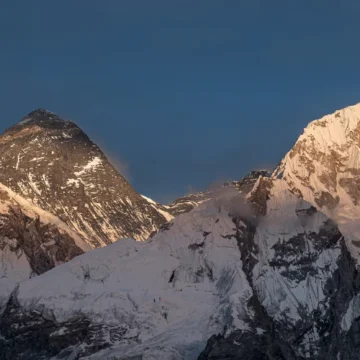
Nepal’s Top 10 Must-Visit UNESCO World Heritage Sites
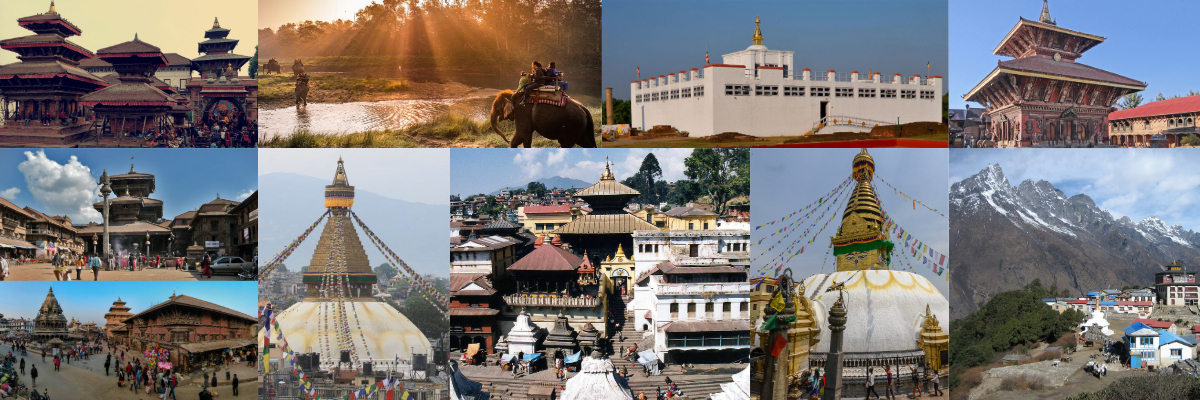
Table of Contents
Nepal is a country of cultural sites, with many heritage sites listed by UNESCO. It is known as the land of Mount Everest, Lord Buddha, thousands of cultures, and many more. Nepal has an excellent reputation for its culture and norms. From Western cultures to stereotyped cultures, you can experience everything in Nepal. For tourists visiting Nepal, these places are heaven. Since they have a history and significance among the locals and must be preserved, UNESCO has listed them.
Kathmandu Durbar Square
Kathmandu Durbar Square is one of the best places to visit in Kathmandu, and it is listed as a UNESCO World Heritage Sites in Nepal. The area starts from the streets of New Road. You will feel different and vibrant vibes as you enter the gate of New Road. The area is always crowded because of the number of shops located there.
After enjoying the aesthetic streets of Basantapur, you will enter Kathmandu Durbar Square. The area is huge, so you must stretch your eyes a lot.
You can even go on a food hunt in Kathmandu Durbar Square. Local Nepali foods include bara, Syapu Micha, Yomari, sel roti, Thakali Khana, Sekuwa, Aila, and Nepali Dumplings (Momo).
You can extend your Durbar Square tour by exploring Asan Market. From wholesale markets to big malls, you can buy anything you want for yourself.
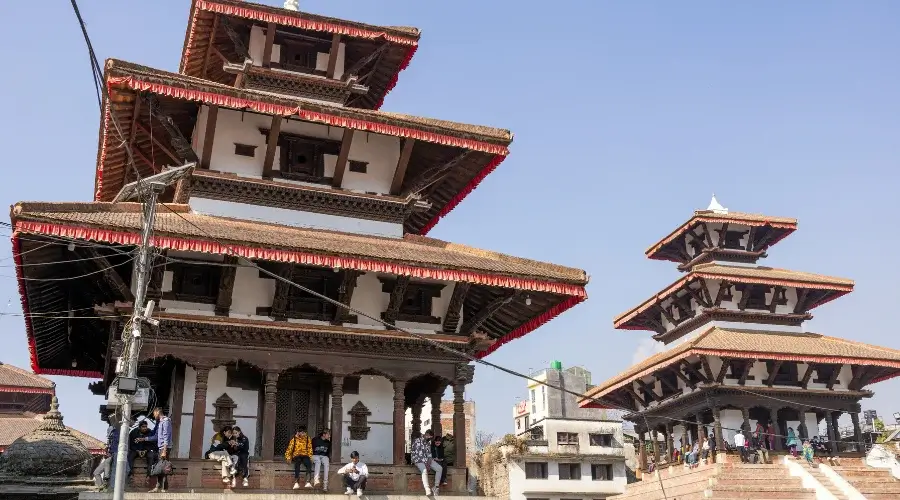
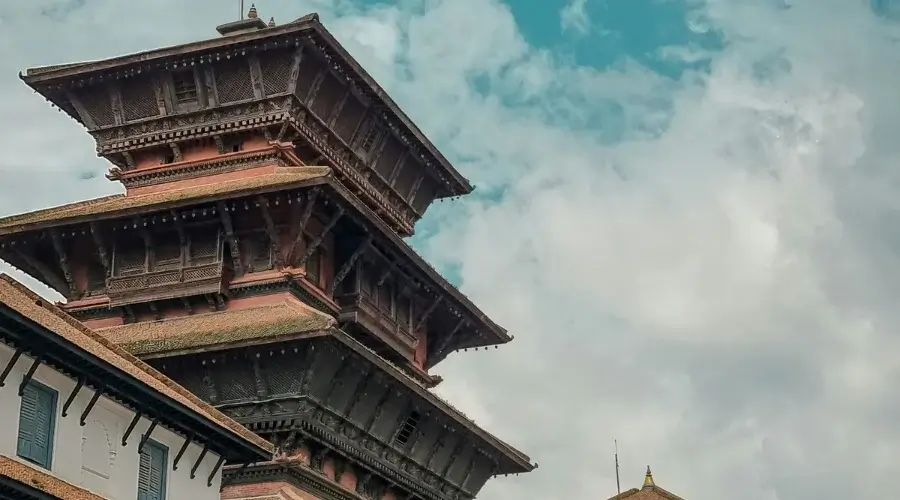
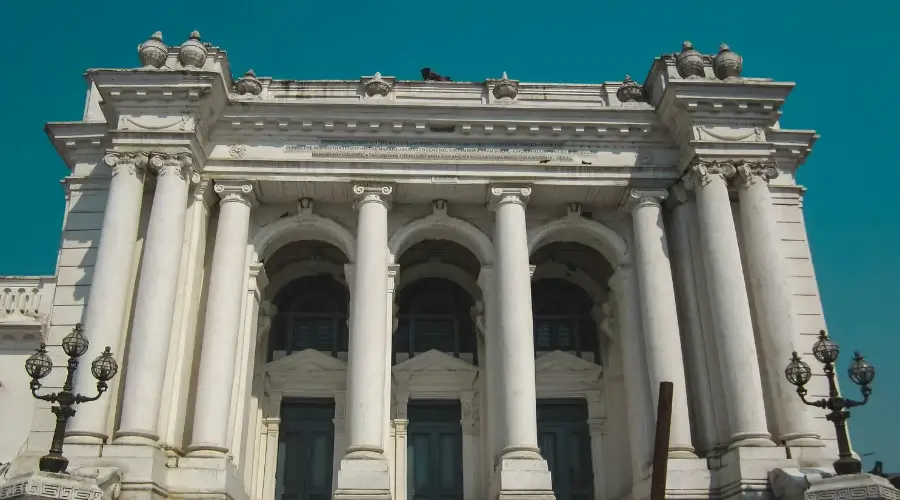
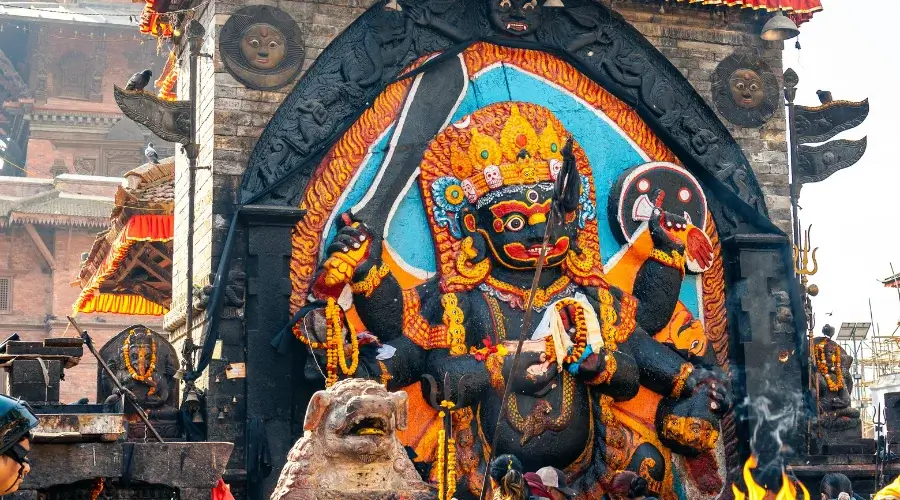
Significant Highlights of the Kathmandu Durbar Square
- Exploration of vibrant local Nepali culture.
- More than 50 temples in the area.
- Kumari Ghar, the house of a god named “Kumari”.
- Tribhuwan Museum.
- Kal Bhairav temple, Kasthamandap, and many more significant sites.
- Western to cultural cafes and restaurants with hippie, cultural vibes.
Kathmandu Durbar Square Ticket Fees
- They do not charge for Nepali citizens in Kathmandu Durbar Square.
- For the SAARC people, the fee is Rs.150.
- The fees for foreingers is Rs.1000.
Bhaktapur Durbar Square
Next on the list is Bhaktapur Durbar Square, another wonder of Nepal that is a UNESCO World Heritage Sites in Nepal. This square is beautiful and has historical icons, such as the well-preserved temples, palaces, courtyards, and streets that show the ancient history of Bhaktapur.
As stated before, Bhaktapur Durbar Square is situated in the central part of Bhaktapur city, 13km east of Katmandu. As you set foot into the Bhaktapur Durbar Square, you are welcomed by an ample open space surrounded by beautiful wood carvings, sculptures, and metalwork. The place is less crowded than Kathmandu Durbar Square, meaning that one has the chance to enjoy the visuals of the place adequately.
When visiting Bhaktapur Durbar Square, it’s a great idea to try some Nepali cuisine. Local delicacies include Juju Dhau (king yogurt), homemade ‘Bhaktapur style’ moms, bara and Chatamari, and Thwon, a rice beer.
You can spend more time in Taumadhi Square with Nyatapola Temple or Dattatreya Square, which has a three-story pagoda-style temple. You can also go to Pottery Square, where you can see local artisans at work producing pottery.
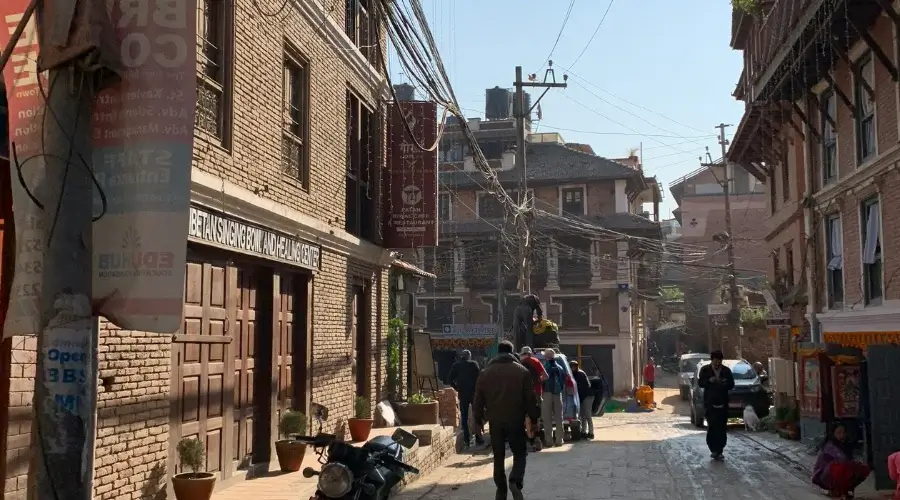

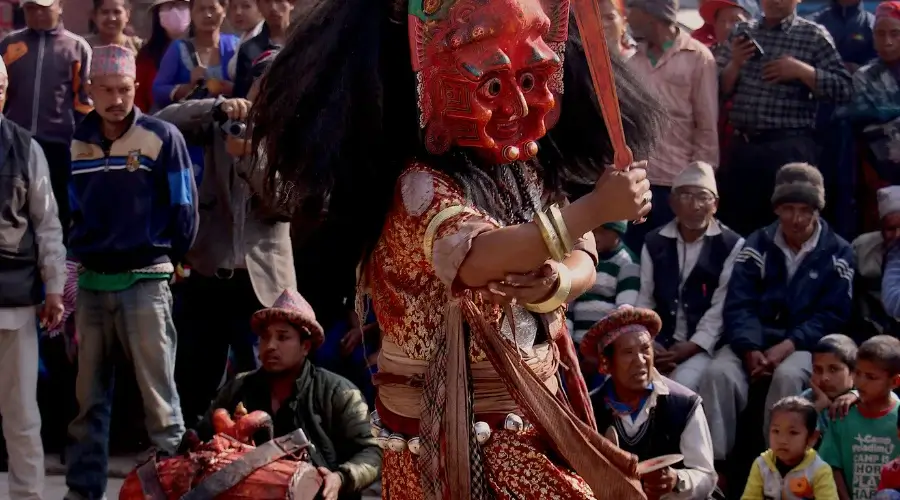
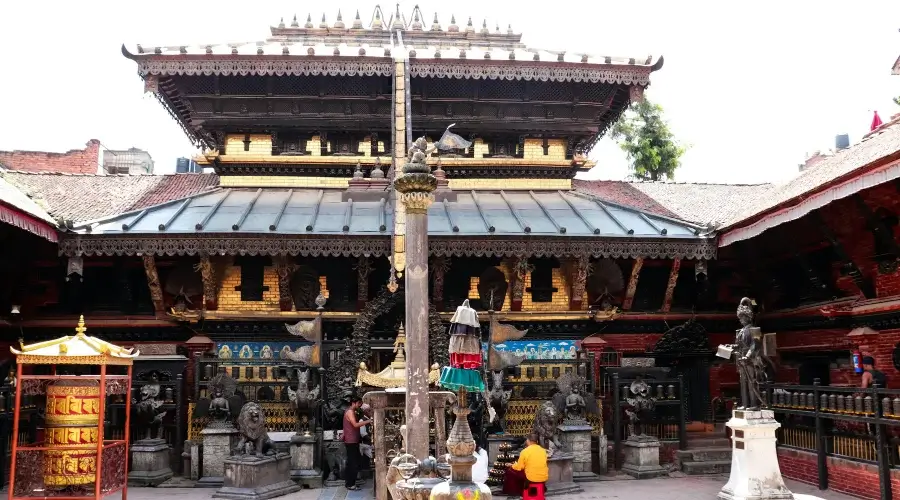
Significant Highlights of Bhaktapur Durbar Square
- Rich local Newari culture and traditions.
- More than 30 temples and historical buildings.
- 55-Window Palace.
- Vatsala Temple and its stone bell.
- Nyatapola Temple in Taumadhi Square.
- Dattatreya Temple and Peacock Window.
- Numerous local shops sell traditional crafts and souvenirs.
Bhaktapur Durbar Square Ticket Fees
- The entry fee for Nepali citizens is free.
- For SAARC nationals, the fee is NPR 500.
- For foreigners, the fee is NPR 1,500.
Patan Durbar Square
Another fantastic example of a UNESCO World Heritage sites in Nepal is Patan Durbar Square in Lalitpur. Patan Durbar Square has become famous because of its Newari architecture, ancient temples, and royal courtyards, which will always remind the Nepalese people of their historical legacy.
Patan Durbar Square is located approximately 5 kilometres south of Kathmandu in Lalitpur. If you come from a nearby area within the town, you can access the area by taxi, bus, or foot.
When you approach the area known as Patan Durbar Square, you will see the beautiful wooden and stone carvings and the magnificent Palace and temple. So, while visiting the site, you can also taste Nepali foods. Yomari, Bara, Chatamari, and NewarareKhaja Set are famous Nepali foods. Also, acknowledge the exquisite Patan-style Patan-style momo recipe and local sweets.
As you shorten your stay around the temple, engage in other activities, including visiting the Golden Temple (Hiranya Varna Mahavihar), Kumbeshwar Temple, and Mahabouddha Temple. Alternatively, you can go to the Patan Museum, where there are many samples of traditional art and the exposition concerning the history and structure of the area is available.
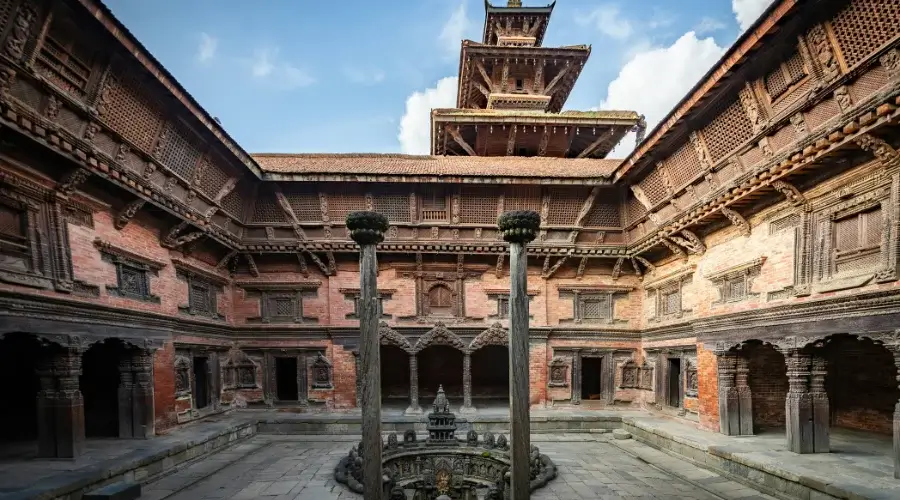
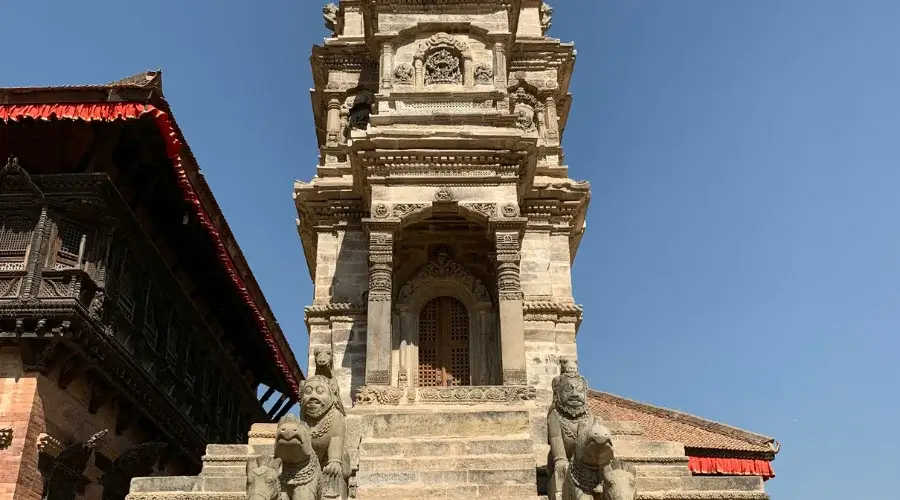
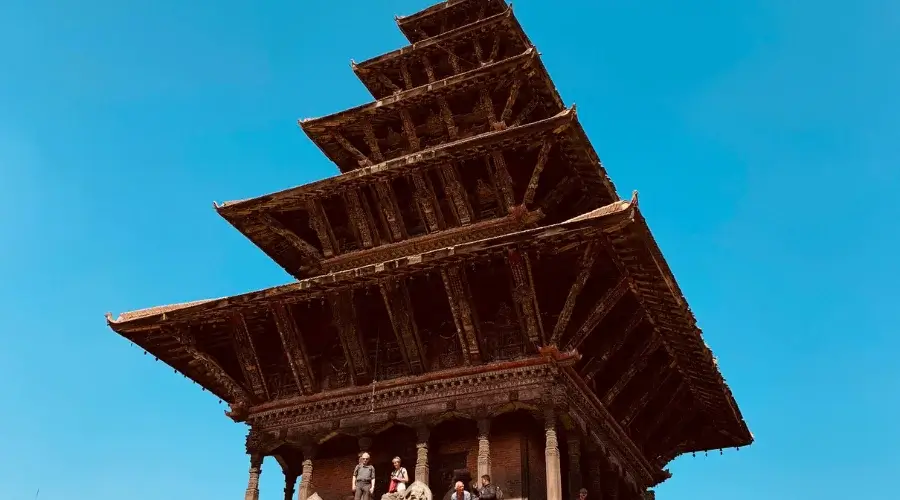
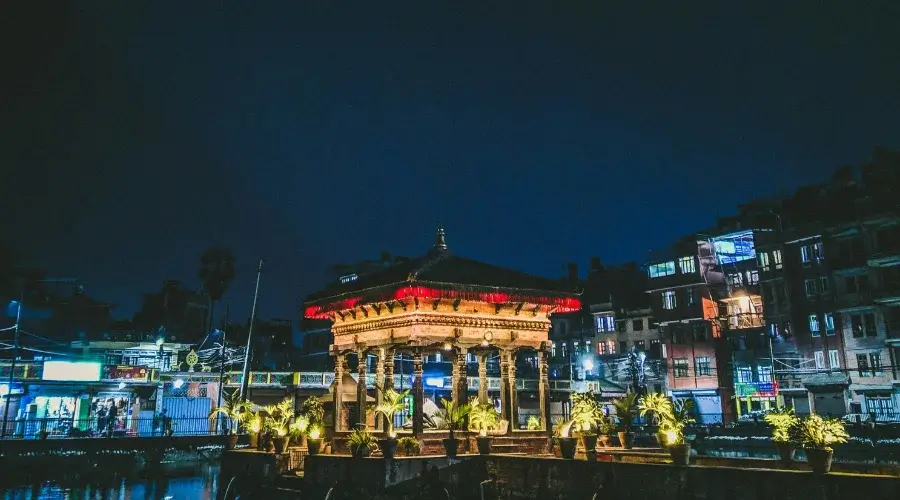
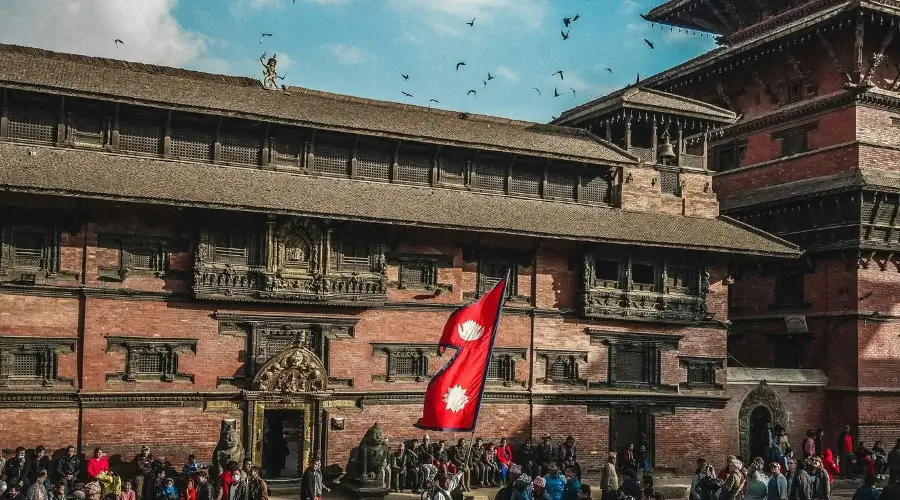

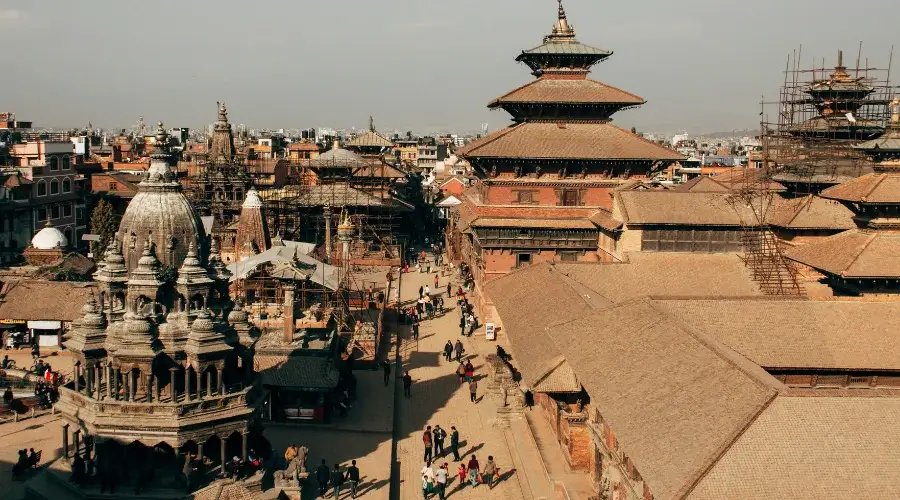
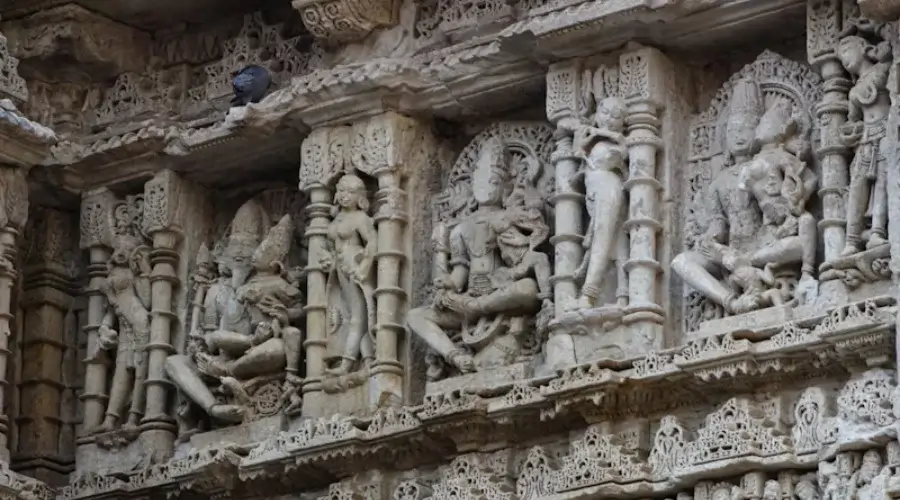
Significant Highlights of Patan Durbar Square
- Rich Newari architecture and culture.
- More than 30 temples and historical buildings.
- Krishna Mandir is a stone temple with intricate carvings.
- Hiranya Varna Mahavihar (Golden Temple).
- Bhimsen Temple and Vishwanath Temple.
- Patan Museum, showcasing traditional arts and crafts.
- Numerous local shops sell traditional crafts and souvenirs.
Patan Durbar Square Ticket Fees
- The entry fee for Nepali citizens is free.
- For SAARC nationals, the fee is NPR 250.
- For foreigners, the fee is NPR 1,000.
Changu Narayan Temple
Changu Narayan Temple, a UNESCO World Heritage Sites in Nepal, is one of the oldest Hindu temples in Nepal. Situated atop a hill in the Bhaktapur district, it blends ancient art, architecture, and rich cultural heritage.
Changu Narayan Temple is about 12 kilometers east of Kathmandu. You can get it by taxi or local bus from Kathmandu or Bhaktapur. The drive to the temple provides scenic views of the surrounding countryside.
Upon arriving at Changu Narayan Temple, you’ll be greeted by a serene environment and exquisite architecture. The temple, dedicated to Lord Vishnu, has vines dating back to the Licchavi period (4th to 9th century).
Try some local snacks and delicacies while exploring the area around Changu Narayan Temple. Popular foods include Yomari, Sel Roti, Bara, and local Newari dishes, which can be found in nearby eateries.
Extend your visit by exploring the surrounding villages and scenic trails. You can also visit the nearby town of Bhaktapur to explore its own Durbar Square and other historical sites.
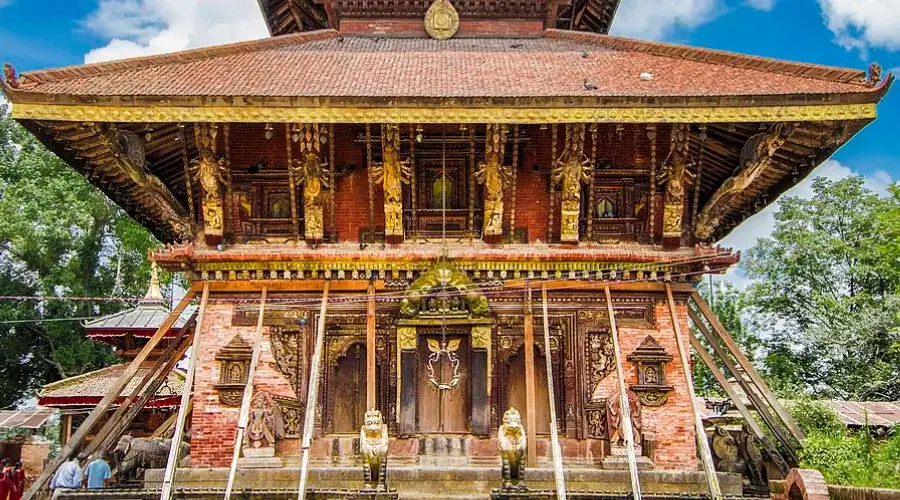
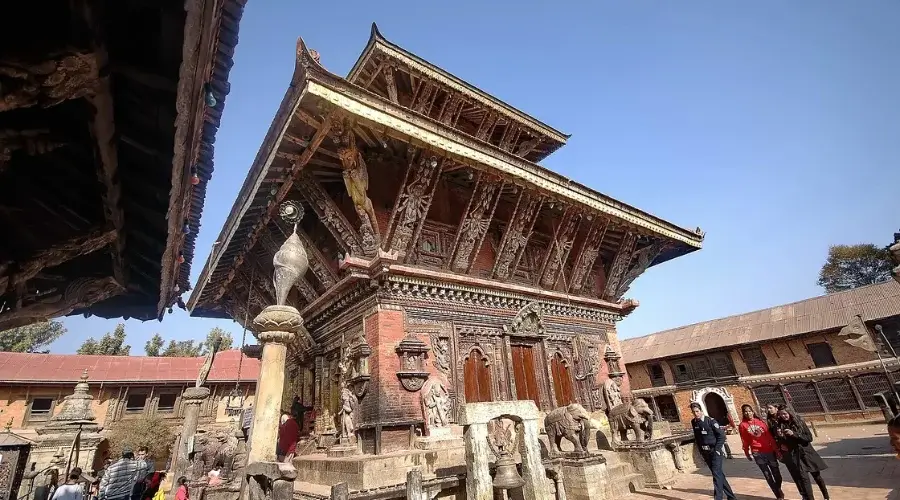
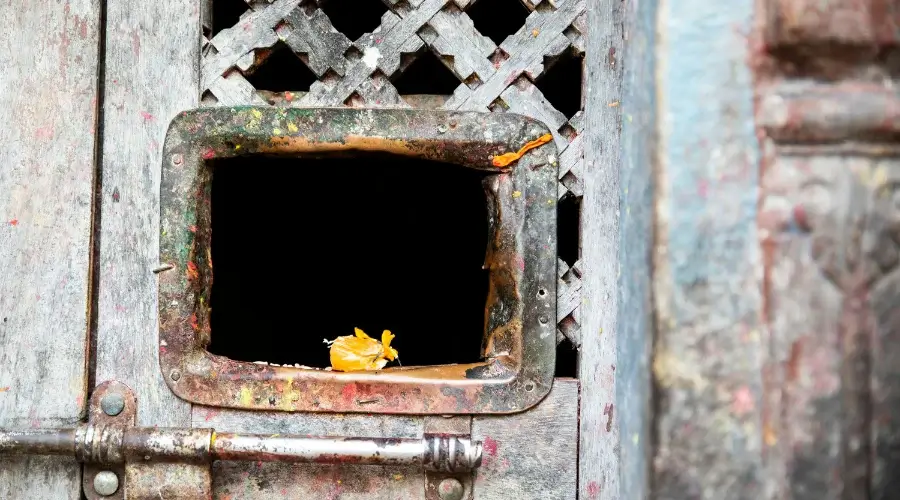
Significant Highlights of Changu Narayan Temple
- The rich history and ancient architecture.
- Detailed stone and wood carvings depicting various forms of Vishnu.
- Stone pillar inscription from the 5th century.
- Views of the surrounding hills and Kathmandu Valley.
- A peaceful environment is ideal for meditation and reflection.
Changu Narayan Temple Ticket Fees
- The entry fee for Nepali citizens is free.
- For SAARC nationals, the fee is NPR 300.
- For foreigners, the fee is NPR 1,000.
Swoyambhunath Stupa
Swayambhunath Stupa, also understood as the Monkey Temple, is perhaps the most famous and oldest in Kathmandu. It is 2,205 meters high and provides a picturesque view of the valley. It is both a Buddhist and a Hindu shrine. Swayambhunath Stupa is situated in the western part of the Kathmandu Valley, approximately 3 kilometres from the city centre.
If you are coming from a nearby region, getting to the stupa by taxi, local bus, drive, or moderate trek is feasible. This sets the spirit for a few minutes to climb up the 365 steps to the stupa to get a nice view of the city. At the very pinnacle of the structure, tourists can marvel at the whitewashed dome, a gilded spire, and the’ All-Seeing Eye of Buddha’.
Stupas, shrines, and small temples cover the greater part of this complex. Additional features such as prayer wheels, colourful prayer flags, and a group of monkeys enhance the active spirituality of the location. Also, beside the stupa are stalls where you can purchase local foods and sweets. The typical meals consist of Tibetan bread, momo, a form of local dimming, and thukpa, a form of noodle soup.
Tasting some butter tea or a lassi from local stores may be necessary. You can spend more time in the Swayambhunath complex by visiting other temples and shrines. Other nearby interests include the National Museum of Nepal and the Natural History Museum.
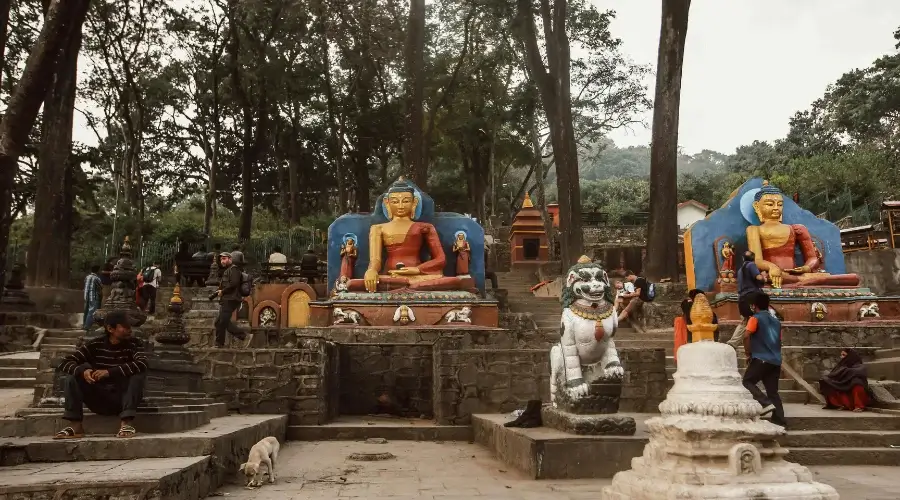



Significant Highlights of Swayambhunath Stupa
- Stunning panoramic views of Kathmandu Valley.
- Iconic white stupa with the all-seeing eyes of Buddha.
- Numerous small stupas, shrines, and temples are within the complex.
- A peaceful environment is ideal for meditation and reflection.
- Rich history and cultural significance.
- The presence of monkeys gave it the nickname “Monkey Temple.”
Swayambhunath Stupa Ticket Fees
- The entry fee for Nepali citizens is free.
- For SAARC nationals, the fee is NPR 50.
- For foreigners, the fee is NPR 200.
Boudhanath Stupa
The Boudhanath Stupa is one of the biggest stupas in the Kathmandu Valley and one of the most significant Buddhist shrines. Swayambunath is situated on the northeastern rim of Kathmandu and is marked by the massive mandala and giant stupa in the backdrop. This beautiful and serene place is also a place of faith and should not be missed.
Boudhanath Stupa is approximately 11 kilometres from the centre of Kathmandu. The central business district is just a short drive away, and you can take a taxi, rickshaw, or car.
It is a huge circular structure with a white exterior topped by a golden pinnacle—the Boudhanath Stupa. The two ‘Eyes of Buddha’ represent omniscience, which is evident in the sculpture on all four cardinal faces of the stupa. Besides the large central stupa, there are many small stupas, monasteries, and authentic Tibetan boutiques and cafes.
Next to the stupa is the Boudha market, where many shops and restaurants offer genuine Tibetan products and dishes. Similar to other Asian countries, Little Nepal is also well-known for its foods like Tibetan bread, Keema Noodles, laphing, momo, and thukpa. Before leaving, you should not forget to enjoy a cup of butter tea or sweet lassi from the café nearby.
For travellers with further curiosity, the Kopan Monastery provides wonderful scenery and knowledge about Tibetan Buddhism. The sacred Hindu temple of Pashupatinath Temple is just a few kilometres away.
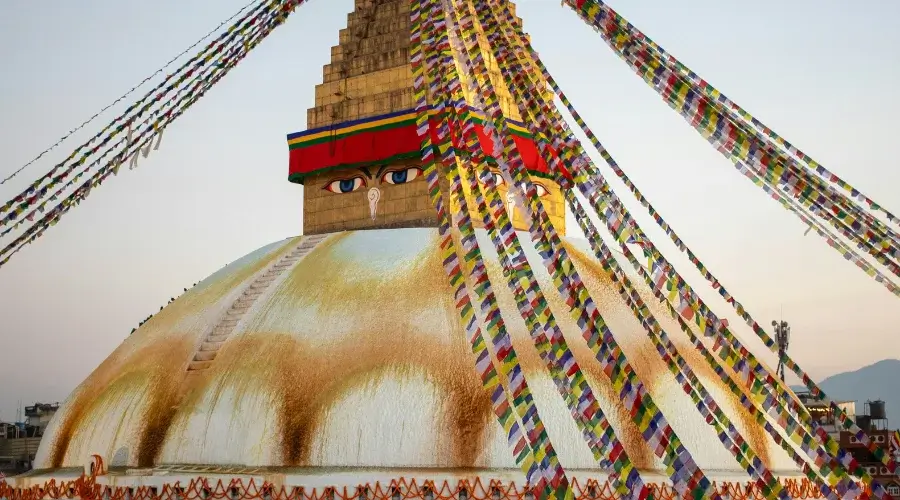
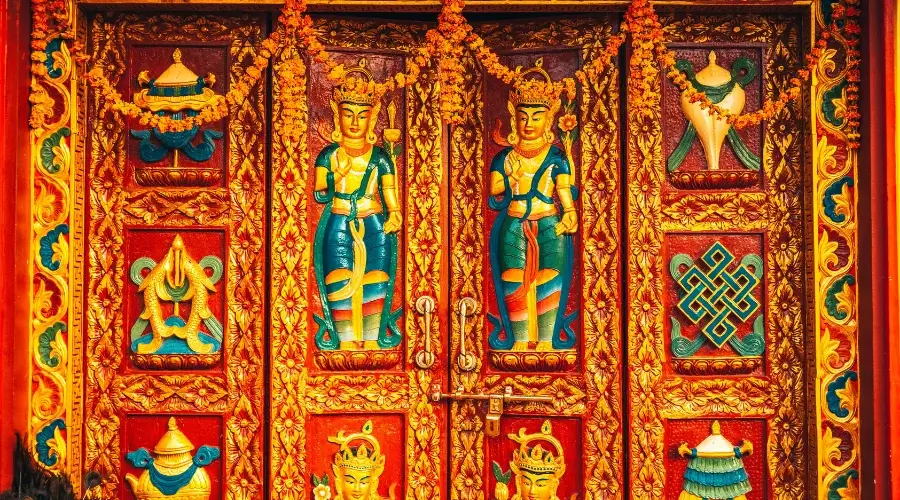
Significant Highlights of Boudhanath Stupa
- Massive and iconic stupa with a golden spire.
- Stunning panoramic views and spiritual ambience.
- Surrounding monasteries and Tibetan-style shops.
- Vibrant atmosphere with prayer wheels and flags.
- It is an important pilgrimage site for Buddhists.
Boudhanath Stupa Ticket Fees
- The entry fee for Nepali citizens is free.
- For SAARC nationals, the fee is NPR 50.
- For foreigners, the fee is NPR 400.
Pashupatinath Temple
Pashupatinath Temple is another Hindu Temple on the banks of the holy river Bagmati, located in Kathmandu. UNESCO has recorded it as a world heritage site.
It is one of the ancient temple complexes on the bank of the Bagmati River at Kathmandu. This temple is also famous as ‘Pashupatinath Temple’. It is devoted to Lord Shiva, the lord of destruction in Hinduism. Pashupatinath temple is situated east of Kathmandu valley, approximately 5 kilometres from the city centre. It can be comfortably reached by taxi, rickshaw, or minibus, taking tourists to the sacred building with a roof structure.
The main temple area of the complex represents a beautifully architectural pagoda under a tin roof with four silver-gilded doors. Lord Shiva is its presiding deity, and his symbol, the lingam, is installed in the temple. The structure of the temple is an archetype of true Hindu temple architecture. In essence, the Bagmati River runs alongside the temple.
The famous Pashupatinath Temple is vibrant and full of positive energy. This religious spot is frequented by devotees who come to offer worship and participate in rituals and ceremonies. The temple is most active during certain Hindu festivals, such as Maha Shivaratri, when thousands of people flock to worship.
It is equally delightful to see the Aarti perform rhythmically on the Ghat of Bagmati River in the evening, along with the music of chanting and lightening lamps. Adjacent to the temple are small shops selling Nepali and Indian foods, such as samosas.
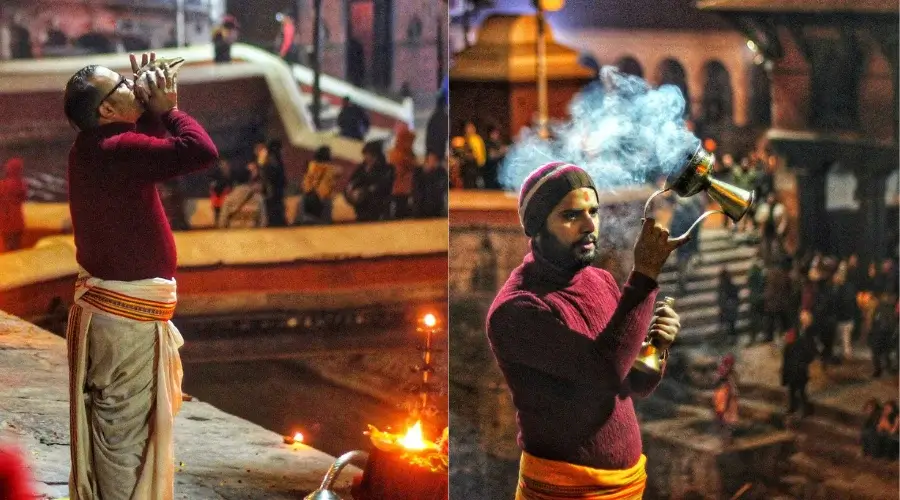
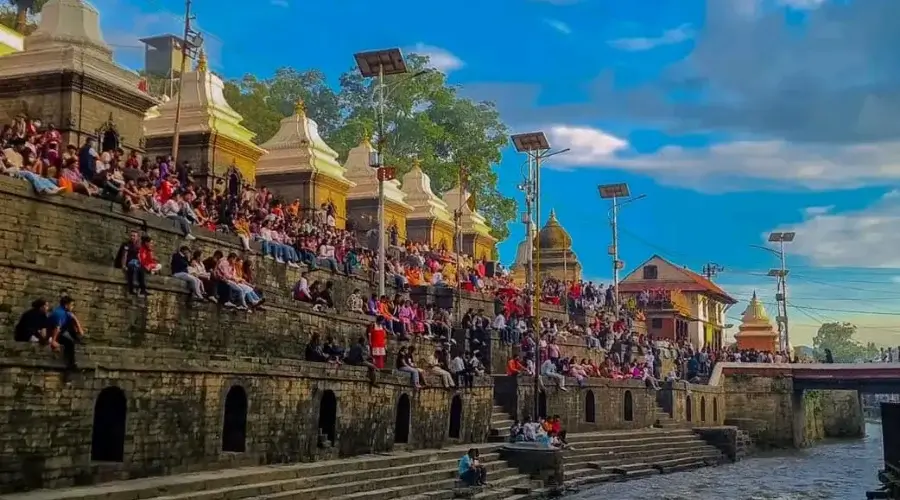
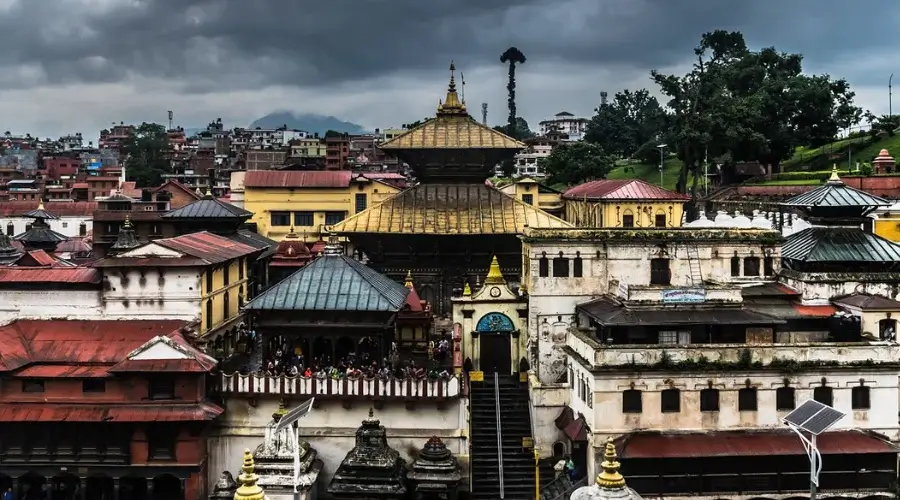
Significant Highlights of Pashupatinath Temple
- The grand pagoda-style main temple has a golden roof and silver doors.
- The sacred linga of Lord Shiva is central to the temple’s worship.
- The Bagmati River and the ghats are used for ritual ceremonies.
- The vibrant atmosphere is especially present during festivals like Maha Shivaratri.
- Evening Aarti on the river is a captivating and spiritual experience.
- It is a significant site for both Hindu devotees and cultural tourists.
Pashupatinath Temple Ticket Fees
- The entry fee for Nepali citizens is free.
- For SAARC nationals, the fee is NPR 100.
- For foreigners, the fee is NPR 1000.
Lumbini – The birthplace of Lord Buddha
A pilgrim site in the Rupandehi District of Nepal, Lumbini is recognized globally as the birthplace of Siddhartha Gautama or Lord Buddha. This is recorded as a UNESCO World Heritage Sites in Nepal and a popular pilgrimage destination for Buddhists and those searching for enlightenment.
Lumbini, the birthplace of Lord Buddha, is about 300 km west of Kathmandu. The site can be reached by domestic airlines from Kathmandu to Siddharthanagar (Bhairahawa) airport and then a short drive. There are also other ways to get to Lumbini, such as by road transport for Lumbini from Kathmandu, which can take about 8-10 hours by bus or private car.
The main religious shrine is the Maya Devi Temple, which signifies the birthplace of Queen Maya Devi, who gave birth to Prince Siddhartha. Currently, within the temple compound is an old stone tub, which is said to have been the birthing pool of Siddhartha, the sacred grove, and the Ashoka Pillar, which marks the visit of Emperor Ashoka in the 3rd century B.C.
The area around Maya Devi Temple is well preserved with vegetation, lotus pools, and some archaeological relics. The area contains a variety of monasteries and stupas erected by numerous Buddhist countries that present different architectural designs and spiritual atmospheres.
Apart from the Maya Devi Temple and the sacred garden, there are other places of interest, such as the Lumbini Museum, which displays fossils and other relics of Buddha’s life and the history of Buddhism. The adjacent town of Siddharthanagar also provides other cultural attractions and bazaars.


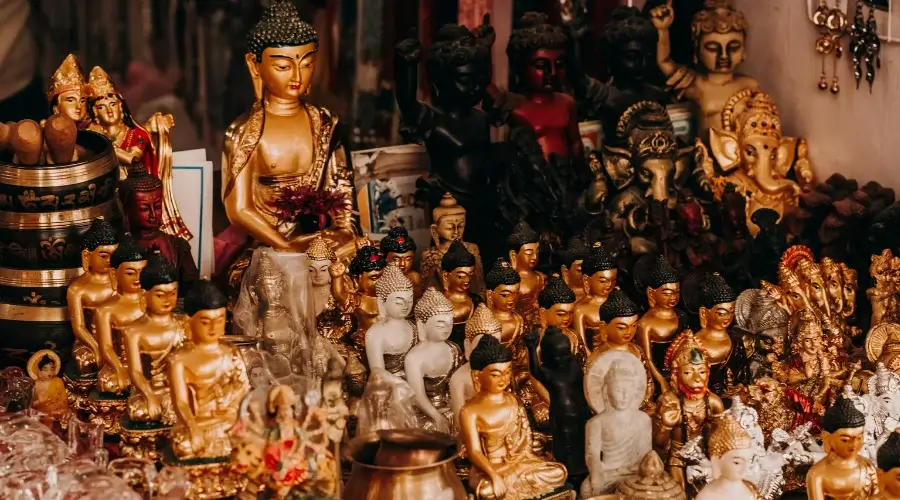


Major Highlights of Lumbini
- The Maya Devi Temple marks the birthplace of Lord Buddha.
- The sacred garden and the ancient Ashoka Pillar.
- The serene environment is ideal for meditation.
- A variety of monasteries and stupas were built by different Buddhist nations.
- The Lumbini Museum showcases Buddhist artifacts and history.
- The lush greenery, lotus ponds, and historical ruins.
Lumbini Ticket Fees
- The entry fee for Nepali citizens is free.
- For SAARC nationals, the fee is NPR 100.
- For foreigners, the fee is NPR 200.
Chitwan National Park
Chitwan National Park is a well-known wildlife reserve in the southern Terai area of Nepal and also a UNESCO World Heritage Sites in Nepal. Famed for its biological wealth and conservation measures, the park offers the opportunity to visit Nepal’s lowland forests and grasses.
Chitwan National Park lies approximately 150 kilometres by air southwest of the capital city of Nepal, Kathmandu. One can have a drive to the park, which will take about 5-6 hours, or take a short domestic flight from Kathmandu to Bharatpur Airport, followed by a short drive to the park. Transportation to the park is good, and the park is easily accessible to travellers.
Chitwan National Park occupies an area of around 932 square kilometres and has many wildlife species, including one-horned rhinoceros, Bengal tiger, and Asian elephants. Tourists can go on jeep tours, nature trekking, and boats on the various rivers within the park. The park also has many bird species residents, making many bird watchers come and view the different kinds of birds.
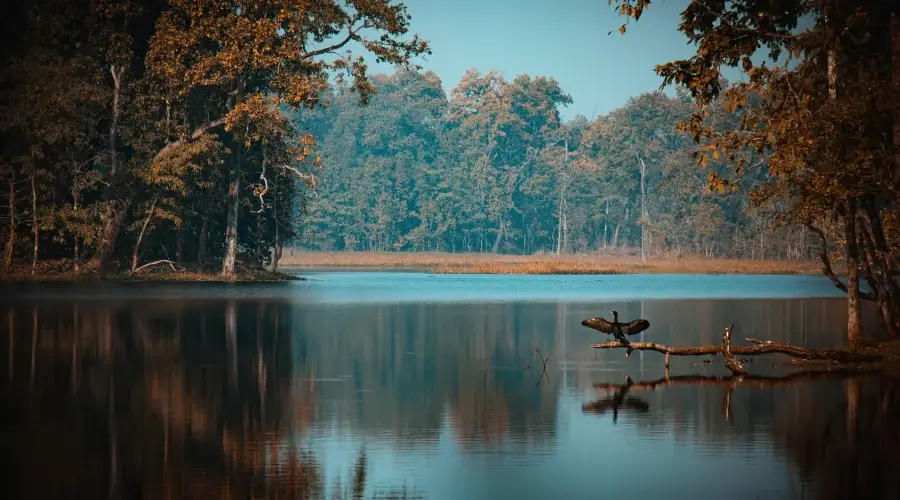
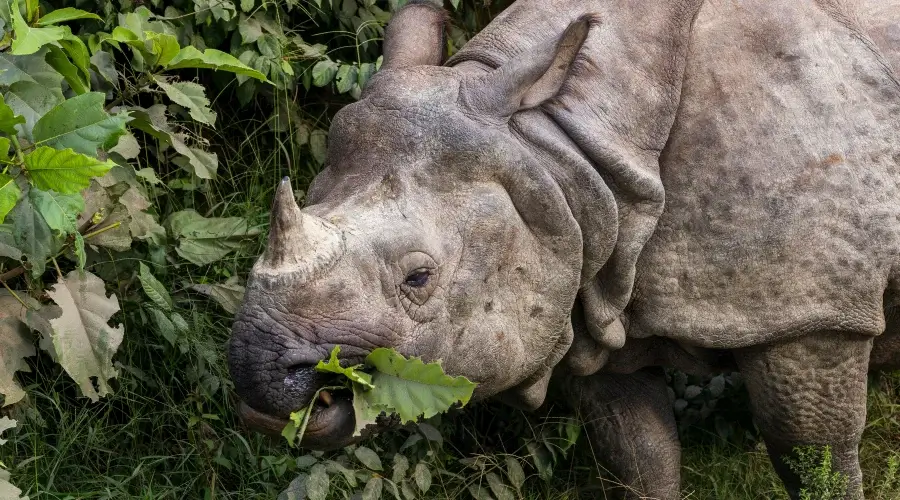


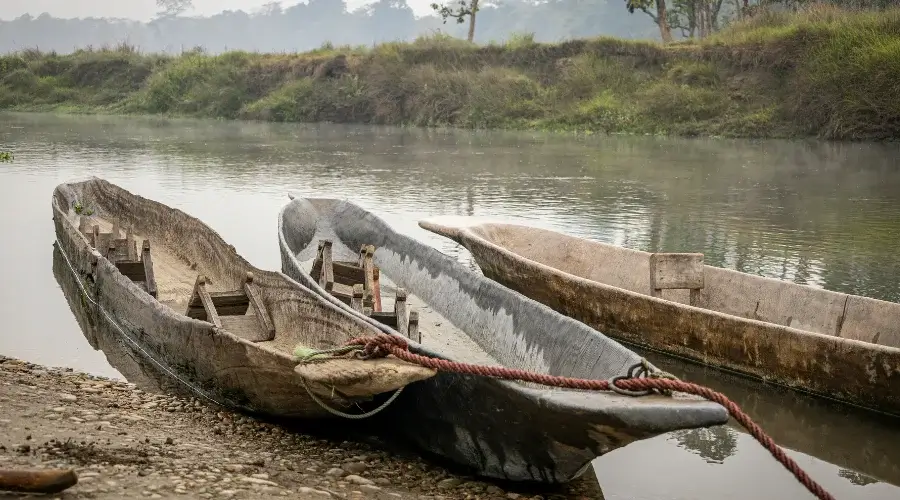
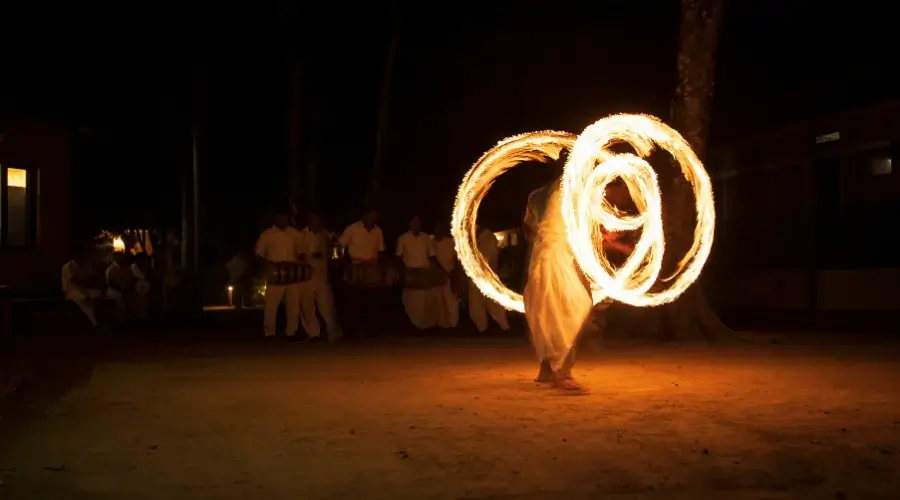
Activities and Experiences
Jeep Safari: Specialized Jeeps will take you through the park’s various ecosystems, from forests to grasslands. This is one of the most effective ways of seeing big game animals such as rhinos and tigers.
Jungle Walk: On a guided walk, you can join a park naturalist and view the park and its smaller inhabitants closely.
Canoe Ride: Take a boat ride along the different rivers in the park and try to spot some of the animals, like gharials that feed on fish or any of the numerous types of birds in the park.
Elephant Safari: This traditional activity is perfect for guests who want to view the park and its animals from the back of an elephant. It is a beautiful way to experience the park and its animals.
Some commonly sold foods are Dal Bhat (Lentil soup served with rice), Momos (Steamed dumplings), and Tharu foods. Varieties of food prepared by Tharu people are tendered with Tharu local herbs and spices so that they have the original taste.
Nearby Attractions
- Tharu Village Tour: Visit local Tharu villages to learn about the culture and traditional lifestyle of the Tharu people, the region’s indigenous inhabitants.
- Elephant Breeding Center: Located near Sauraha, this centre focuses on the conservation and care of elephants, offering a chance to learn about these majestic animals up close.
Significant Highlights of Chitwan National Park
- Rich biodiversity, including the one-horned rhinoceros, Bengal tigers, and Asian elephants.
- Various safari options include jeep safaris, jungle walks, and canoe rides.
- Diverse bird species and natural habitats.
- The opportunity to experience local Tharu culture and cuisine.
- Scenic landscapes range from dense forests to open grasslands.
Chitwan National Park Ticket Fees
- For Nepali citizens: NPR 150 (for the park entry).
- For SAARC nationals: NPR 1,000 (for the park entry).
- For foreigners: NPR 2,000 (for the park entry).
Sagarmatha National Park
Sagarmatha National Park is a UNESCO World Heritage Sites in Nepal in the Solu Khumbu region of Nepal. As it is the pinnacle of the world, Mount Everest. This park is famous for its beautiful geography, rich wildlife and stunning Sherpa culture for trekkers and nature lovers.
Sagarmatha National Park is in the Solu-Khumbu district of the country and is about 200 km northeast of the capital, Kathmandu. Lukla, the park’s entrance, has daily flights, but fog may sometimes hinder them.
At 1,148 square kilometres, it offers ornate features in terms of geographical structure, such as high mountain ranges, deep valleys, glaciers, and forested zones. This park’s most attractive element is Mount Everest, or Sagarmatha, as the Nepalese call it, which stands 8,848 meters tall. Tourists can also see other mountains, including Lhotse, Nuptse, and Ama Dablam.
In Sagarmatha National Park, flora and fauna are also large. At the lowest range, you will likely come across rhododendrons and groves of birch and pine trees. Moving up the mountain’s slopes, the vegetation progresses from quelling to alpine for shrubs and grasses.
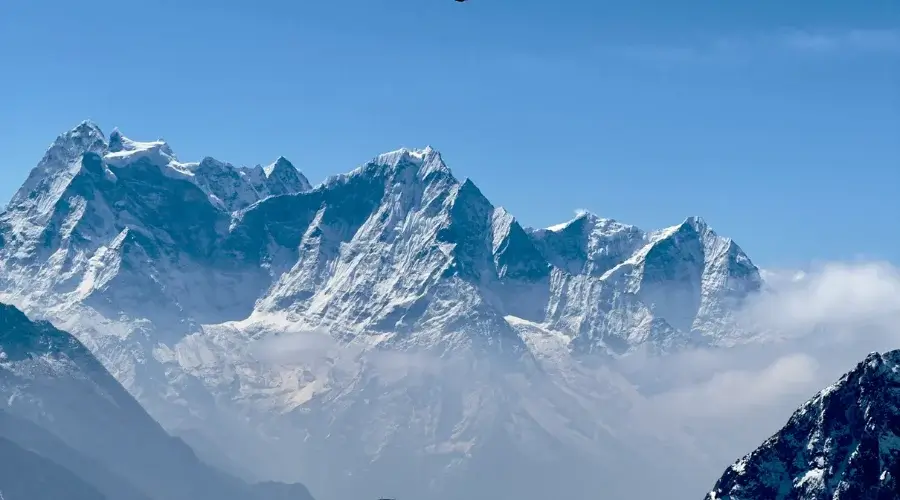
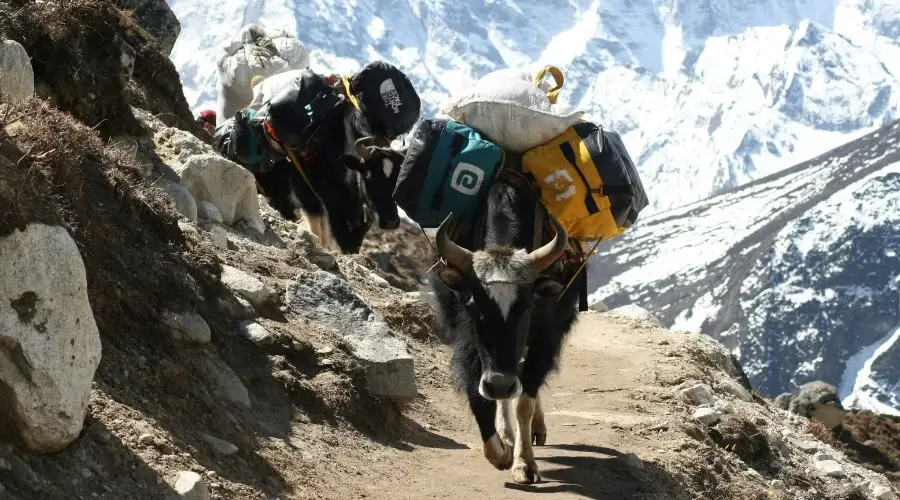
Activities and Attractions
Trekking: The park also provides several famous routes, like the Everest Base Camp trek, the Gokyo Lakes trek, and the Three Passes trek. Such routes allow visitors to see splendid panoramas and experience the narrow Sherpa spirit.
Mountaineering: Apart from trekking, the Sagarmatha National Park is primarily famous for mountaineering; people climb Mt. Everest and other lofty mountains.
Cultural Experience: Some natural attractions include traditional Sherpa villages, where tourists can learn about customs and festivals, among other things.
While trekking in the park, you’ll find teahouses and lodges offering traditional Nepali and Tibetan food. Popular dishes include dal Bhat (lentil soup with rice), momo (dumplings), and thukpa (noodle soup). You can also enjoy a cup of tea or hot chocolate to warm up after trekking.
In addition to the park’s natural beauty, you can visit the nearby town of Namche Bazaar, a bustling hub for trekkers that offers various services, shops, and cultural sites. The Tengboche Monastery, located at a high altitude with stunning views of Everest, is another significant cultural attraction.
Significant Highlights of Sagarmatha National Park
- Home to Mount Everest, the highest peak in the world.
- Stunning landscapes, including glaciers, deep valleys, and high peaks.
- Rich biodiversity, including rare species like the snow leopard and red panda.
- Popular trekking routes with spectacular views and cultural experiences.
- Traditional Sherpa villages and vibrant local culture.
Sagarmatha National Park Entry Fees
- Nepali Citizens: Free.
- SAARC Nationals: NPR 1,000.
- Foreigners: NPR 3,000.
Want to know more?
Speak to an Expert





Sandip Dhungana
Nepal 🇳🇵
Whatsapp: +977-9823636377


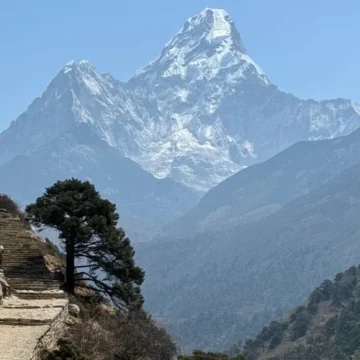
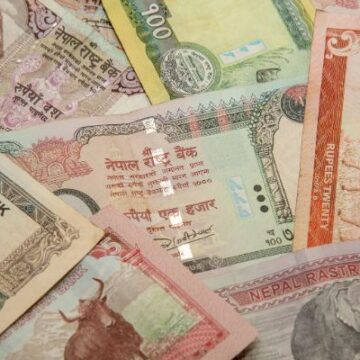
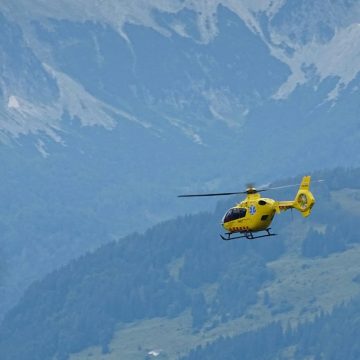
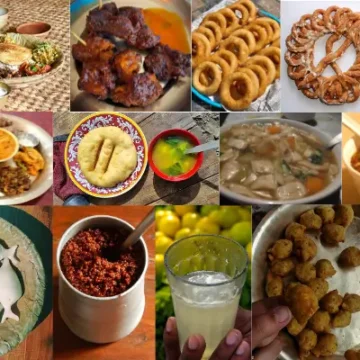

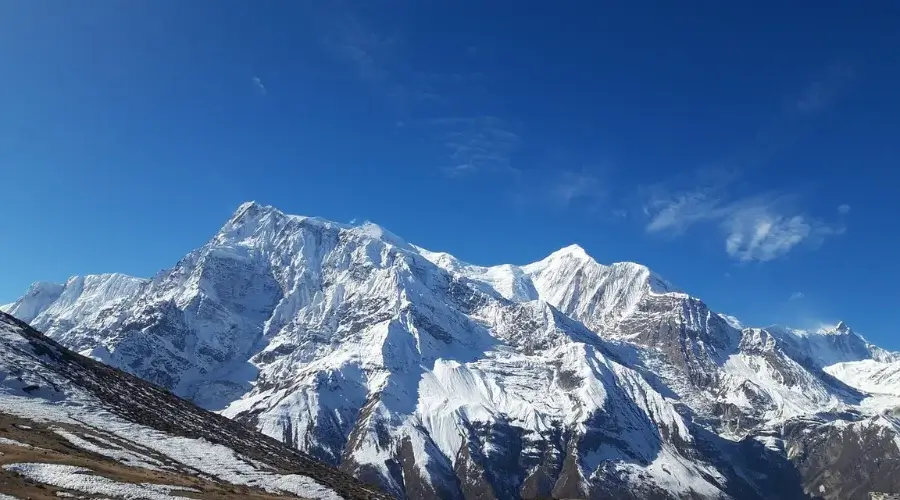











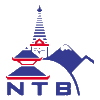


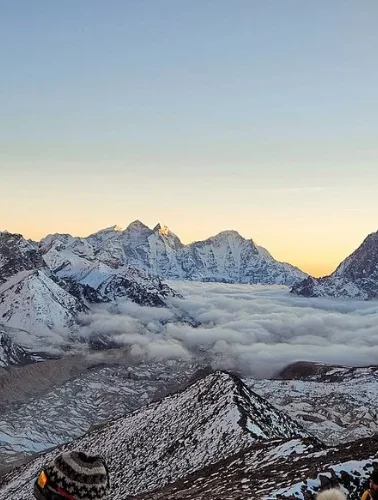

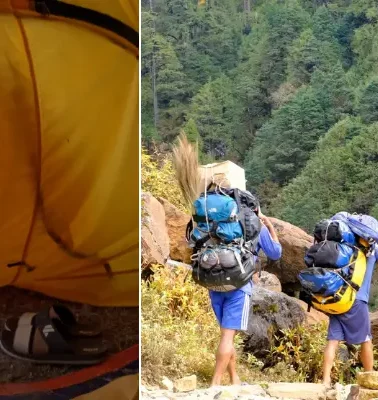
Leave Your Comment